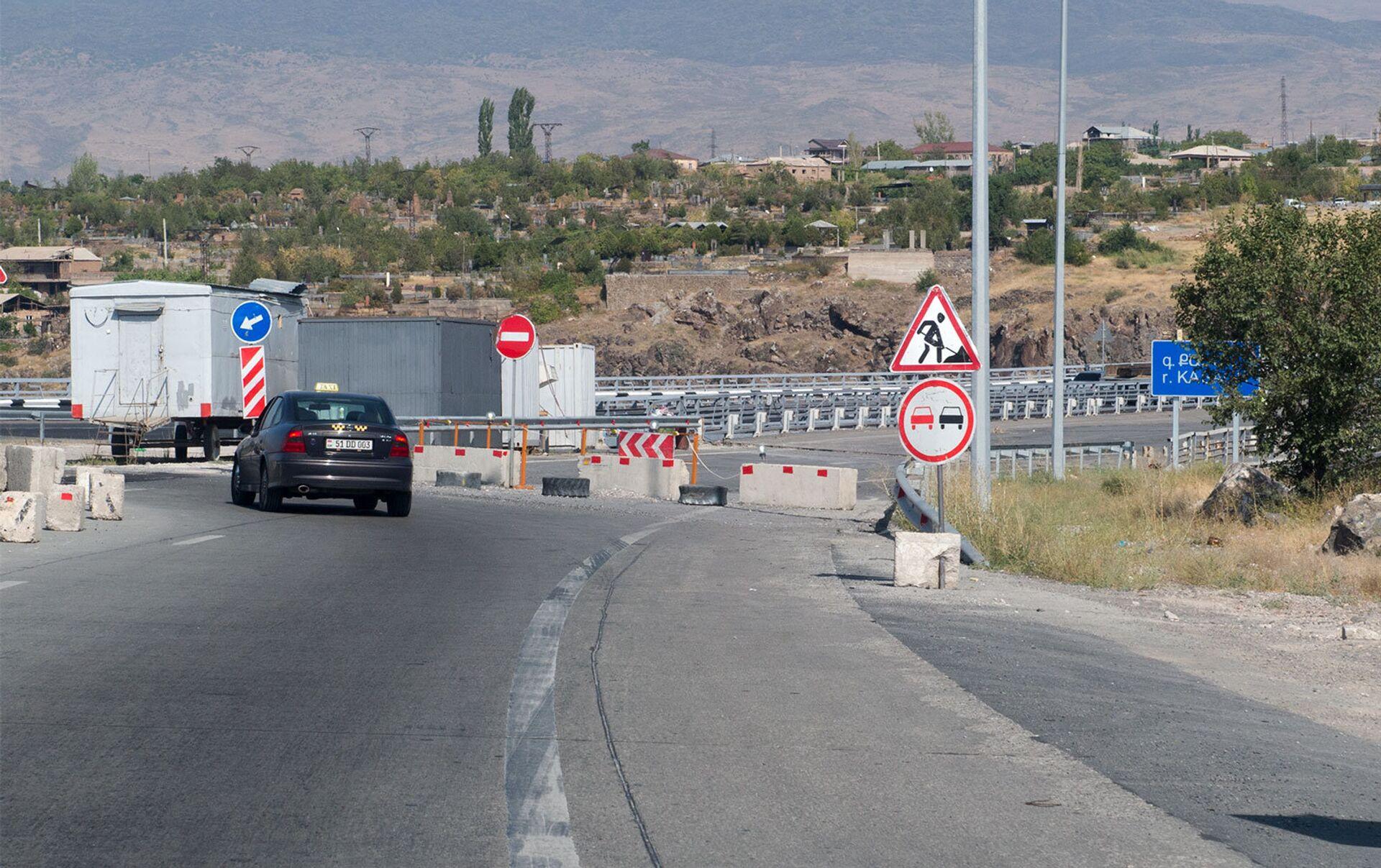North-South highway as pinnacle of Armenian harebrained scheming If you can't do it yourself, step back and make room for others
In Armenia, they started talking about harebrained scheming as a major scourge in Armenian society. And the fact that the Armenians themselves are aware of the problem shows that everything is really bad. Loudly declaring something, they are able to build castles in the air in this country very well, but it often does not go beyond words. One of the convincing examples is the North-South international highway project. The project that [Armenian Prime Minister Nikol] Pashinyan likes to brandish as a business card of economic viability.
Because of the international significance of the project, some foreign political scientists have dubbed this road "Armenian Zangazur". However, so far this project is, in fact, nothing, a big fat zero. They began to embody it a long time ago, the long-term construction is already approaching its 10th anniversary…
According to the plan, the North-South highway should link the Persian Gulf with the Black Sea through Iran, Armenia and Georgia. Back in April 2015, Yerevan signed a $150 million loan agreement with the Eurasian Development Bank for its laying. However, the construction that began around 2018 was almost exhausted. For a very simple reason - corruption ate up half of the project's budget, and the whole of Armenia relished high-profile lawsuits about stolen contractors with interest. As a result, as it turned out, only 40 with a small tail of kilometres of the highway were built.
India breathed new life into the Armenian happiness project by deciding to work more closely with Yerevan to implement the global North-South concept, which, as you know, begins in Europe and ends in India. In fact, Delhi took this step "to spite" Azerbaijan, Türkiye and its enemy, Pakistan, which had begun to cooperate actively and fruitfully.
In general, if we talk about the origins, then the basis of the entire North-South transport route was laid back on September 12, 2000, in accordance with an intergovernmental agreement signed between Russia, Iran and India. Azerbaijan joined this project in 2005. In general, the cooperation document has been ratified by 13 countries (Azerbaijan, Belarus, Bulgaria, Armenia, India, Iran, Kazakhstan, Kyrgyzstan, Oman, Russia, Tajikistan, Türkiye, and Ukraine).

And it is precisely because of this project that Armenian Prime Minister Nikol Pashinyan, at a government meeting held in February 2022, announced a tender for the preliminary qualification of the Sisian-Kajaran section of the North-South highway, which, according to him, is of strategic importance for the country. But, alas, it did not go beyond words again.
But Pashinyan has not lost his passion for projecting: at the international meetings of the prime minister, the theme North-South flashed again like a bright pennant, and Armenian journalists, and not only them, could not help noticing this vaudeville. With great enthusiasm, Pashinyan talked about the global prospects of the North-South highway at a meeting with Iranian President Ebrahim Raisi and with no less pride – in a recent interview with Al Jazeera during his visit to Qatar.
Armenian publications also laughed a lot at the chairman of the Armenian National Assembly, Alen Simonyan, who also hit the spotlight and began discussing the prospects of the same North-South project during a meeting in Tehran with Iranian Parliament Speaker Khalibaf. It was "funny and pathetic" to watch Simonyan, who, unlike his colleague, did not own the topic at all, according to Armenian citizens. The Armenian side's blatant incompetence in this matter is exposed by the fact that Iran is lobbying for this project much more than Yerevan, realising its importance for itself, but sometimes it cannot break through the Armenians' dense stupidity.
The point of ridicule: Khalibaf, who clearly doubted that Simonyan understood what was being said, had to remind him that "the construction of the North-South international transport corridor is necessary for Iran and Armenia to ensure national and regional security and the development of bilateral cooperation". To remind the representative of a country that has been isolated from its neighbours for decades means international contacts.
In general, the Iranian parliament speaker's polite, sparing phrase about "all the efforts made by the Armenian leadership to accelerate the completion of construction" has nothing to do with reality. In fact, the highway is ready, according to Armenian Territorial Development and Infrastructure Minister Gnel Sanosyan, "only by 5-6 per cent". And the most interesting thing is that these 5-6 per cent were rebuilt even before the "velvet cabinet" came to power in Armenia, that is, until the spring of 2018.
So, it is questioned why to disgrace yourself and try to throw dust in eyes?
But what can you do if Armenian-style projecting is a very serious diagnosis that has a destructive effect on the development of the entire South Caucasus. At the same time, Yerevan demonstrates its inability to cooperate with India, closing its chances of transit independence completely, in deep sand. Why, in a state of "dog in the manger" and unable to complete such an important transit corridor for Armenia, do the country's authorities so stubbornly refuse to unblock communications in the South Caucasus, not giving those who are ready to do everything quickly and efficiently the opportunity to take up this matter? It is no coincidence that folk wisdom says: if you can't do it yourself, step back and give way to others.








